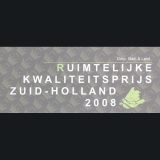
or press 'enter'
This housing scheme is located on the edge of the centre of Papendrecht, a town in the west of the Netherlands. The site is bordered by a traditional housing scheme built in the 1950’s on one side, and by a small park on the other. The intention of the scheme was to create a new area with a specific character for the municipality of Papendrecht. The project replaces the original apartment blocks, which housed a poor social environment, with a dense urban structure containing a variety of housing types and provides an improved public realm of small streets and courtyards. Nineteen different housing types accommodate the need for differentiation, with all dwellings having access to their own outdoor area, whether it is a garden, roof terrace or conservatory. A parking garage is situated beneath the new housing adjacent to the park. The housing blocks vary in height from two to four floors, and rise up towards the park creating a sloping roof landscape. When viewed from the buildings opposite, thy form an extension of the park. Using a similar stone for both the facades and pavement reinforces the concept of integrating the new development with the landscape. The stone cladding is used primarily on the facades facing the existing housing. The undulating block overlooking the park is clad in timber. The resulting buildings and clearly defined public spaces provide a comfortable connection between the existing housing area and the park, creating a new distinctive residential area whilst rejuvenating the adjacent areas.
